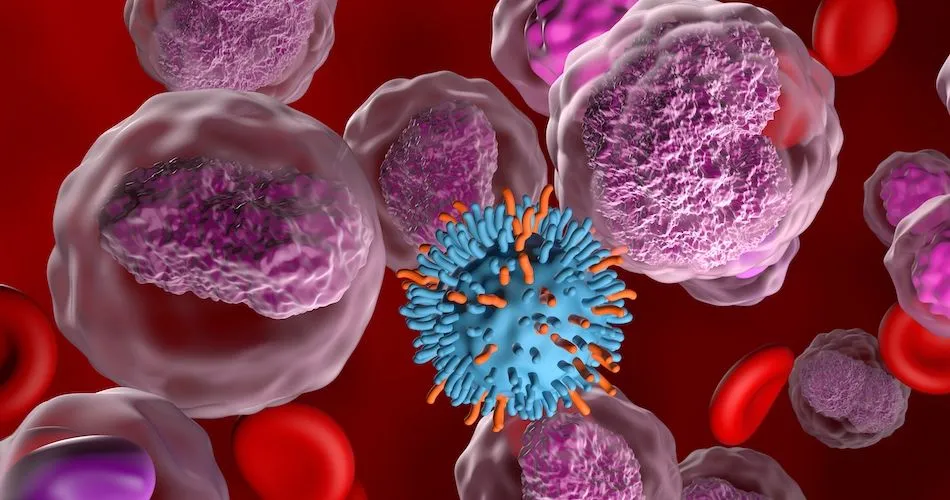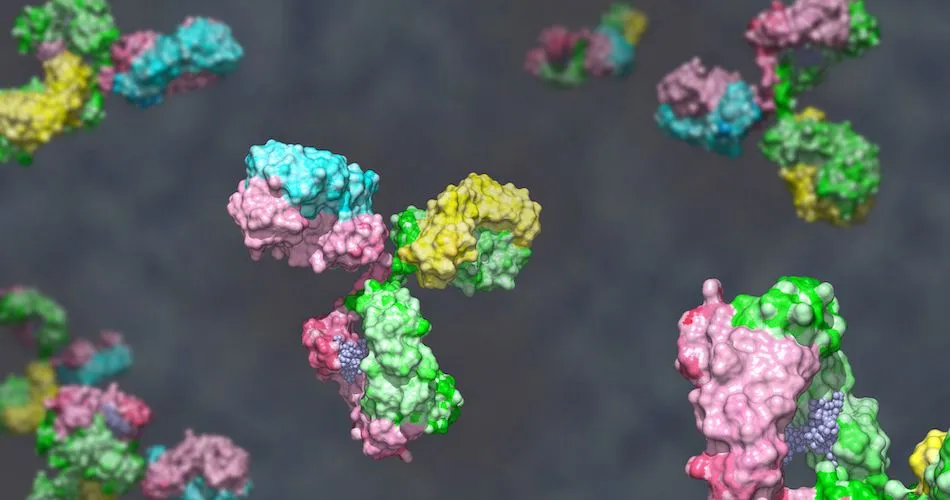ASH 2023: Circulating Tumor DNA as a Detection Tool Following DLBCL Therapy

Mark Roschewski, a clinical investigator at the National Cancer Institute in Bethesda, Maryland, presented groundbreaking research at the 2023 American Society of Hematology (ASH) conference that could reshape the way we define remission in patients with diffuse large B-cell lymphoma (DLBCL). Collaborating with fellow researchers, Dr. Roschewski explored the role of circulating tumor DNA (ctDNA) in determining remission status at the end of therapy for patients with DLBCL.
Varying Definitions of DLBCL Remission
Patients with DLBCL who are treated with curative intent face a critical step at the end of therapy when they undergo a final PET scan to determine their remission status (partial or full reduction of disease). While PET scans are vital, they can produce false positives or negatives, complicating the determination of active lymphoma. Dr. Roschewski and his team set out to investigate whether a highly sensitive ctDNA blood test could serve as a more reliable predictor of clinical outcomes compared to PET scans.
PET Scans vs ctDNA
This phase II study enrolled 54 adult patients with stage II-IV DLBCL or high-grade B-cell lymphoma (HGBCL). The results were both promising and transformative. While PET scans and blood tests were both found to be predictive, the ctDNA test emerged as the most predictive of disease growth. Those who tested negative for ctDNA at the end of therapy showed no signs of progression (disease growth). This confirms the ctDNA test can accurately detect any remaining tumor DNA within the blood sample.
Contrastingly, the study identified four patients with negative PET scans who later experienced progression. Interestingly, all of these patients had tested positive for minimal residual disease (MRD) by ctDNA. This observation highlights the superior sensitivity of ctDNA in detecting lingering disease that might not be captured by general imaging techniques.
A Precise DLBCL Prognostic Tool
Dr. Roschewski envisions ctDNA as a tool that can refine our current understanding of remission. The ability of ctDNA to predict progression, even in cases where PET scans show negative results, suggests that it could be a more reliable indicator of true remission. As the research advances, ctDNA might evolve into formal response criteria that could provide more efficient and accurate means of gauging the effectiveness of various therapies in lymphoma, thus guiding therapeutic decisions.
Mark Roschewski, a clinical investigator at the National Cancer Institute in Bethesda, Maryland, presented groundbreaking research at the 2023 American Society of Hematology (ASH) conference that could reshape the way we define remission in patients with diffuse large B-cell lymphoma (DLBCL). Collaborating with fellow researchers, Dr. Roschewski explored the role of circulating tumor DNA (ctDNA) in determining remission status at the end of therapy for patients with DLBCL.
Varying Definitions of DLBCL Remission
Patients with DLBCL who are treated with curative intent face a critical step at the end of therapy when they undergo a final PET scan to determine their remission status (partial or full reduction of disease). While PET scans are vital, they can produce false positives or negatives, complicating the determination of active lymphoma. Dr. Roschewski and his team set out to investigate whether a highly sensitive ctDNA blood test could serve as a more reliable predictor of clinical outcomes compared to PET scans.
PET Scans vs ctDNA
This phase II study enrolled 54 adult patients with stage II-IV DLBCL or high-grade B-cell lymphoma (HGBCL). The results were both promising and transformative. While PET scans and blood tests were both found to be predictive, the ctDNA test emerged as the most predictive of disease growth. Those who tested negative for ctDNA at the end of therapy showed no signs of progression (disease growth). This confirms the ctDNA test can accurately detect any remaining tumor DNA within the blood sample.
Contrastingly, the study identified four patients with negative PET scans who later experienced progression. Interestingly, all of these patients had tested positive for minimal residual disease (MRD) by ctDNA. This observation highlights the superior sensitivity of ctDNA in detecting lingering disease that might not be captured by general imaging techniques.
A Precise DLBCL Prognostic Tool
Dr. Roschewski envisions ctDNA as a tool that can refine our current understanding of remission. The ability of ctDNA to predict progression, even in cases where PET scans show negative results, suggests that it could be a more reliable indicator of true remission. As the research advances, ctDNA might evolve into formal response criteria that could provide more efficient and accurate means of gauging the effectiveness of various therapies in lymphoma, thus guiding therapeutic decisions.

about the author
Kat Richardson
Kat is from Lehi, Utah and is the education manager for lymphoma. She has worked in healthcare for a decade now, and earned her degree in community health education and promotion. Kat is passionate about disease prevention as well as improving quality of life and health equity. She enjoys reading, hiking, baking, ice skating, gardening, time with her family and friends, and most of all, spoiling her nieces and nephew.
More on Conferences
Get the Latest Large B Cell Lymphoma Updates, Delivered to You.
By subscribing to the HealthTree newsletter, you'll receive the latest research, treatment updates, and expert insights to help you navigate your health.








